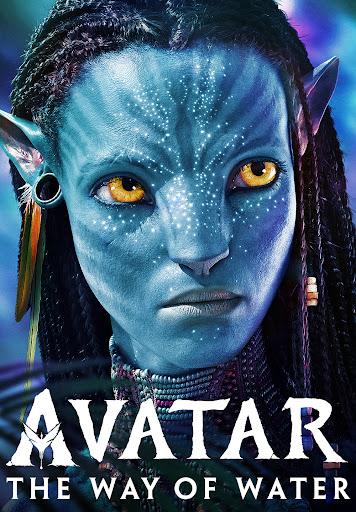The long-awaited sequel to James Cameron’s 2009 groundbreaking film Avatar has finally arrived with Avatar: The Way of Water. This highly anticipated sequel once again takes audiences to the vibrant world of Pandora, where the breathtaking beauty of nature and advanced CGI technology collide to create a visual masterpiece. Beyond its mesmerizing visuals, The Way of Water also delves into deeper themes such as family, environmentalism, and the impact of colonization.

Plot Overview
Set more than a decade after the events of the first film, Avatar: The Way of Water follows Jake Sully (Sam Worthington) and Neytiri (Zoe Saldana) as they raise their family in the lush jungles of Pandora. When the human forces return to the moon, Jake and Neytiri are forced to flee to the oceanic regions of Pandora to protect their children. There, they encounter new tribes of Na’vi who have adapted to life in the water, learning to coexist with marine ecosystems and their mystical creatures. As the conflict intensifies, Jake must confront his past and make sacrifices for the survival of his family and his people.
The Visuals and Technology
Cameron’s vision for Avatar: The Way of Water relies heavily on cutting-edge visual effects, particularly in its underwater scenes. The film’s groundbreaking use of performance capture technology allows the characters to express emotions and movements underwater with stunning realism. This achievement is not only a testament to the advancements in CGI technology but also a triumph of filmmaking craftsmanship. The underwater sequences are mesmerizing, immersing the audience in the alien aquatic world with striking visual fidelity. The film’s visuals are a seamless blend of science fiction and fantasy, drawing viewers into the world of Pandora like never before.
Themes and Messages
At its core, Avatar: The Way of Water is about the bond of family. Jake and Neytiri’s journey revolves around protecting their children and ensuring their safety in a world that is constantly under threat. The film also continues the franchise’s exploration of environmentalism, showcasing the interconnectedness of all living things, especially in the oceanic setting. The film uses its narrative to comment on the devastating effects of human exploitation on nature, a theme that resonates strongly in the current global context of climate change and environmental degradation.
The film also addresses the issue of colonization, highlighting the destructive impact of foreign powers on indigenous cultures. The human forces that invade Pandora continue their pursuit of resources, disregarding the native people and their way of life. This serves as a metaphor for the exploitation of indigenous peoples on Earth, particularly the ongoing struggle for land rights and preservation of cultural heritage.
Character Development
Avatar: The Way of Water excels in developing its characters, particularly Jake and Neytiri. The film focuses on their evolution as parents, their struggles with the responsibilities of raising children in a dangerous world, and their constant fight for survival. The addition of new characters, such as the water tribe members and their unique way of life, also adds depth to the story. The relationship between the characters is enriched by their shared experiences and the bonds they form with each other in the face of adversity.
Conclusion
Avatar: The Way of Water is a triumph of cinematic artistry. James Cameron has once again delivered a visually stunning and emotionally charged film that explores important themes of family, environmentalism, and colonization. With its breathtaking underwater sequences, cutting-edge technology, and captivating narrative, Avatar: The Way of Water elevates the franchise to new heights, promising even more adventures in the lush world of Pandora. For both fans of the original film and newcomers to the franchise, The Way of Water is a must-see cinematic experience that reaffirms the power of storytelling through visual spectacle.





